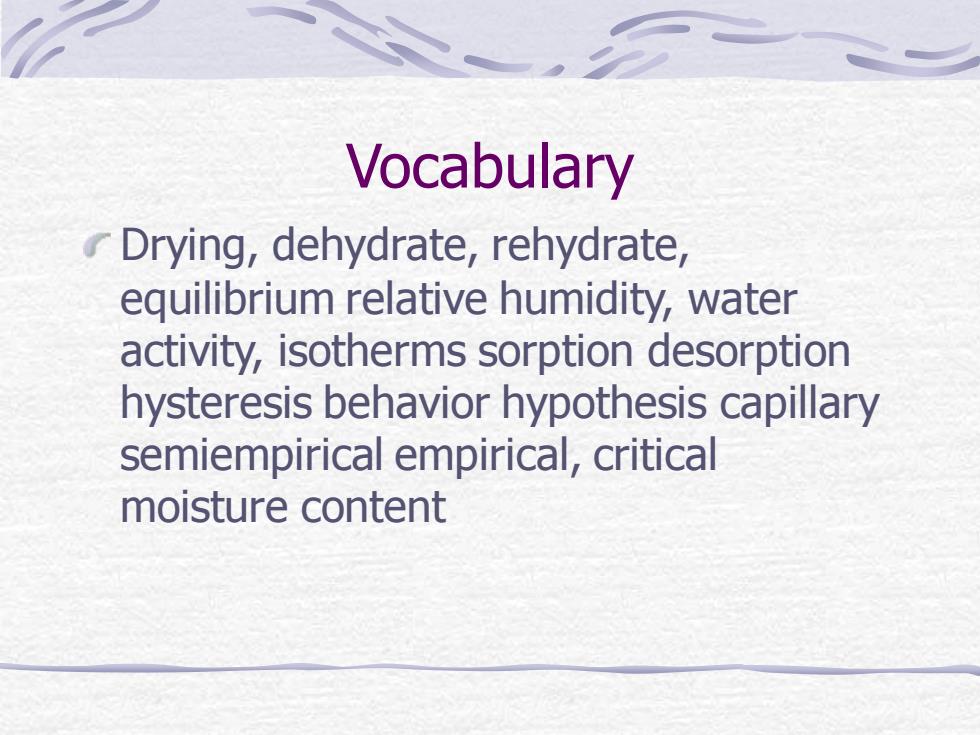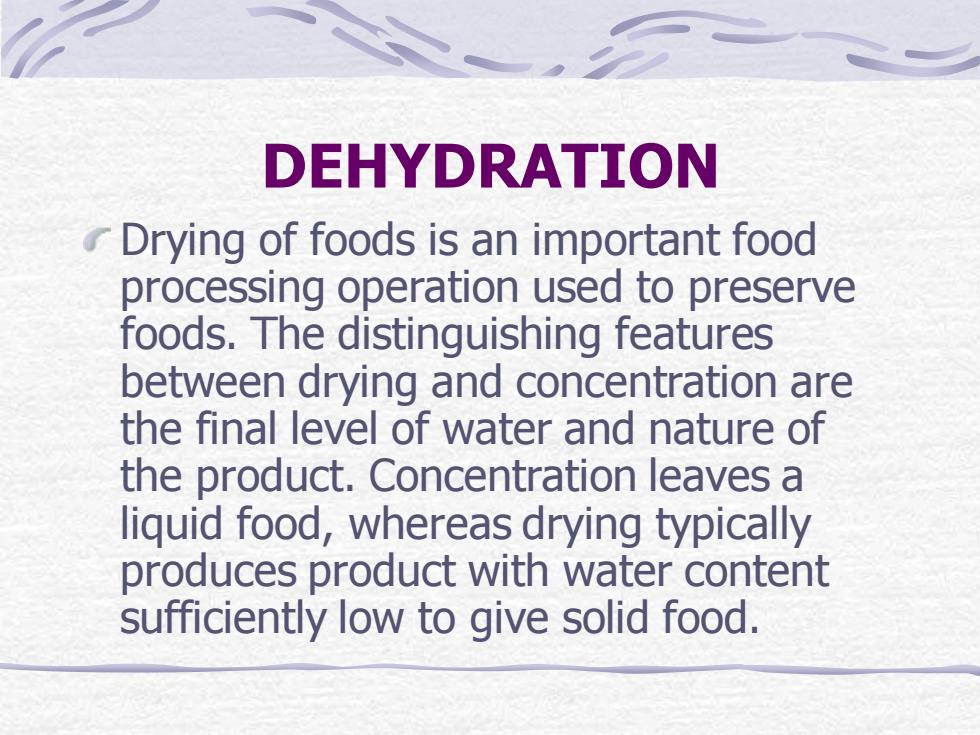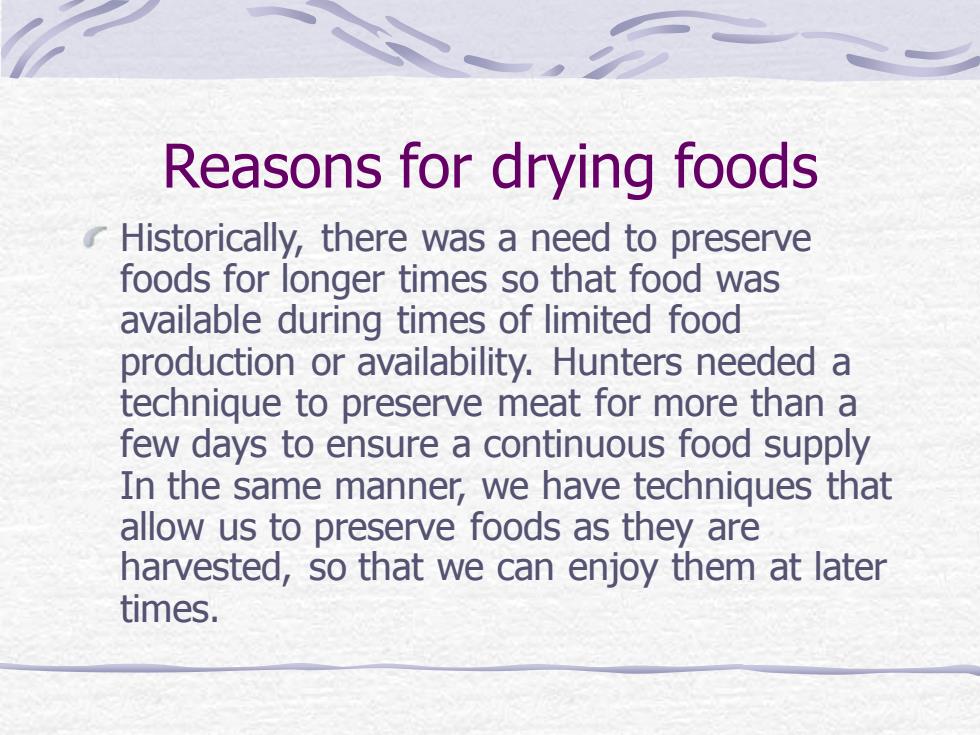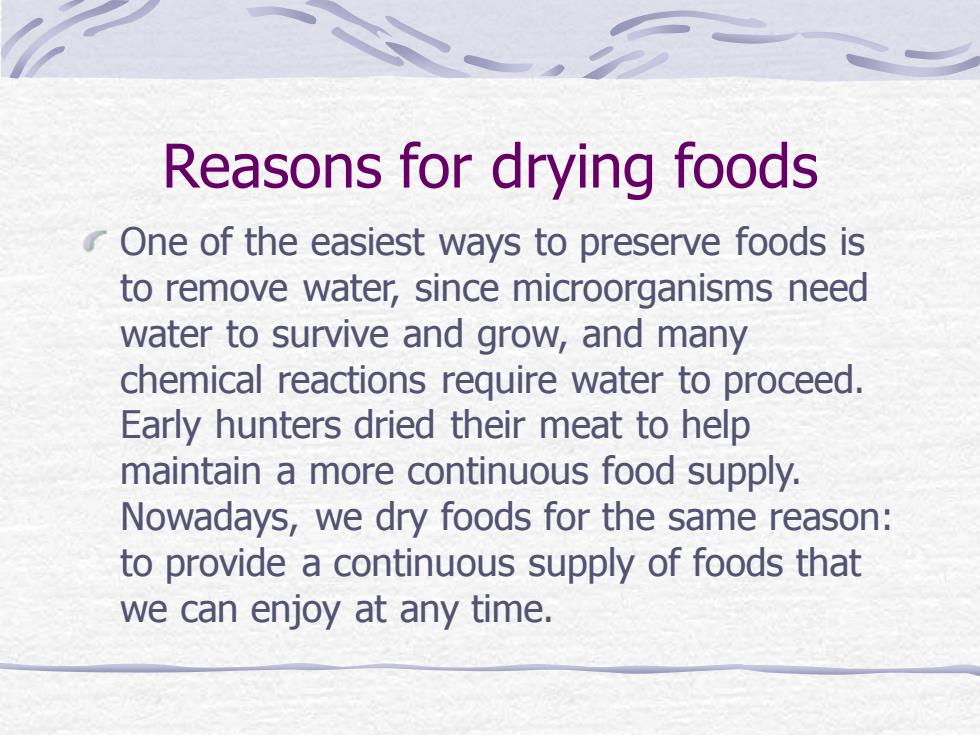
Chapter 8 DEHYDRATION STATE OF WAER IN FOODS EFFECTS OF DRYING ON PRODUCT QUALITY MOISTURE SORPTION AND DESORPTION RATE OF DEHYDRATION FACTORS THAT INFLUENCE DRYING DRYING METHODS SPRAY DRYING FREEZE DRYING
Chapter 8 DEHYDRATION STATE OF WAER IN FOODS EFFECTS OF DRYING ON PRODUCT QUALITY MOISTURE SORPTION AND DESORPTION RATE OF DEHYDRATION FACTORS THAT INFLUENCE DRYING DRYING METHODS SPRAY DRYING FREEZE DRYING

Vocabulary Drying, dehydrate, rehydrate, equilibrium relative humidity, water activity, isotherms sorption desorption hysteresis behavior hypothesis capillary semiempirical empirical, critical moisture content
Vocabulary Drying, dehydrate, rehydrate, equilibrium relative humidity, water activity, isotherms sorption desorption hysteresis behavior hypothesis capillary semiempirical empirical, critical moisture content

DEHYDRATION Drying of foods is an important food processing operation used to preserve foods. The distinguishing features between drying and concentration are the final level of water and nature of the product. Concentration leaves a liquid food, whereas drying typically produces product with water content sufficiently low to give solid food
DEHYDRATION Drying of foods is an important food processing operation used to preserve foods. The distinguishing features between drying and concentration are the final level of water and nature of the product. Concentration leaves a liquid food, whereas drying typically produces product with water content sufficiently low to give solid food

Reasons for drying foods Historically, there was a need to preserve foods for longer times so that food was available during times of limited food production or availability. Hunters needed a technique to preserve meat for more than a few days to ensure a continuous food supply In the same manner, we have techniques that allow us to preserve foods as they are harvested, so that we can enjoy them at later times
Reasons for drying foods Historically, there was a need to preserve foods for longer times so that food was available during times of limited food production or availability. Hunters needed a technique to preserve meat for more than a few days to ensure a continuous food supply In the same manner, we have techniques that allow us to preserve foods as they are harvested, so that we can enjoy them at later times

Reasons for drying foods One of the easiest ways to preserve foods is to remove water, since microorganisms need water to survive and grow, and many chemical reactions require water to proceed. Early hunters dried their meat to help maintain a more continuous food supply. Nowadays, we dry foods for the same reason: to provide a continuous supply of foods that we can enjoy at any time
Reasons for drying foods One of the easiest ways to preserve foods is to remove water, since microorganisms need water to survive and grow, and many chemical reactions require water to proceed. Early hunters dried their meat to help maintain a more continuous food supply. Nowadays, we dry foods for the same reason: to provide a continuous supply of foods that we can enjoy at any time